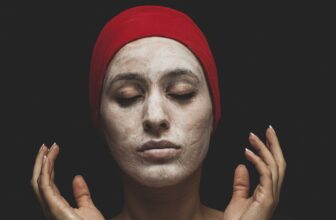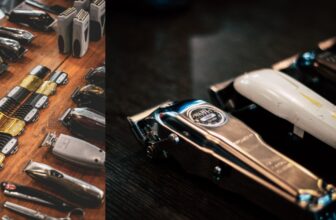Vaseline for Razor Burns and Bumps: Does It Really Work?

Hi There!
My name is Rex, and I have worked in the grooming industry for over eight years and have been enlightened on the things that enable a smooth, irritation-free shave.
Shaving can be both an art form and a punishment to the skin. And I bet everyone has had their fair share of dealing with razor burns and bumps after one too many shaves.
I can say I’ve seen great solutions; some of them, I am happy to say, do work, and most come and go without providing relief and help.
But today, I’m excited to focus on one product that most likely lies in waiting in your washroom and has a label on it: Vaseline. I speak from personal experience when I say that Vaseline has been a game-changer in my grooming routine, offering relief from razor burn and bumps.
What Causes Razor Burn and Razor Bumps?
As someone who has spent years working in a barbershop, I have witnessed it all: clients in pain from the razor burn or coming in with bumpy, rash-like skin after shaving.
Generally, razor burn is the usual phenomenon for almost everyone who has had any form of skin irritation owing to close or fast shaving and changing of blades, of which the completing razor is dull. It’s a sharp pain that can leave one’s skin red and swollen.
The razor bumps are a complicated issue. These arise when hair roots get trapped in the skin and form some small rooted raised bumps that are often highly tender. I have had to deal with it in my own situation and that of my clients, especially those prone to curly and coarse hair types.
Can Vaseline Help with Razor Burn?
I always tell clients that proper preparation and technique are the best way to avoid razor burn. But Vaseline can step in to save the day when razor burn strikes.
I’ve personally used it after particularly rough shaves when my skin feels like it’s on fire. Applying a thin layer of Vaseline helps to lock in moisture, soothing that post-shave burn almost instantly.
The key here is the barrier it creates. Vaseline shields the skin from further friction and irritation, giving your skin the break it needs to heal. In my experience, it’s not an overnight fix, but it speeds up the recovery process, reducing redness and calming inflamed skin.
Can Vaseline Help with Razor Bumps?
Razor bumps have plagued many of my clients, and sometimes, even I’m not immune. While Vaseline isn’t a cure for razor bumps, it does help manage the irritation and swelling associated with them.
I’ve found that applying Vaseline helps soften the skin after shaving, making it less likely for those razor bumps to form in the first place.
In my years of grooming, I’ve encountered clients who swear by Vaseline for reducing razor bumps, though I always advise them to combine it with proper exfoliation and shaving techniques.
By itself, Vaseline won’t lift those trapped hairs out of the skin, but it can create a more healing environment for the skin to recover.
Is Vaseline Good to Use After Shaving?
Applying a thin layer of Vaseline immediately after shaving is a simple yet effective way to lock in moisture and prevent that post-shave dryness I’ve seen so often in my clients. It’s a reliable solution that can provide reassurance in your post-shave routine.
It’s important to mention that while Vaseline works wonders for some, it may not be for everyone. I’ve had clients with acne-prone skin who found it too heavy, as it can clog pores if not used sparingly.
Does Vaseline heal razor cuts?
One thing I’ve learnt in the grooming world is that nicks and cuts are inevitable, no matter how careful you are. Whenever I get a small cut, Vaseline becomes my immediate solution.
Creating a protective seal over the cut shields the wound from dirt and bacteria, which can cause infections. Though it’s not a substitute for cleaning the cut properly, Vaseline helps speed the healing process by preventing the wound from drying out and cracking.
Vaseline vs Other Remedies for Razor Burn and Bumps
Over the years, I’ve experimented with various post-shave remedies. Aloe vera is a personal favorite when looking for something cool and soothing, especially after a long day in the salon.
However, where Vaseline stands out is in its ability to lock in moisture and provide long-lasting protection. Many aftershaves contain alcohol, which can dry out the skin even further, which is something I’ve learned the hard way.
For clients with more severe razor bumps, I often recommend combining Vaseline with other exfoliating products like salicylic acid. This helps prevent ingrown hairs and keeps the skin smooth, something Vaseline alone can’t achieve.
When Not to Use Vaseline
Through my experience with clients and my own skin, I’ve learned that Vaseline isn’t for everyone. Applying Vaseline after a shave could lead to clogged pores and breakouts if you have oily or acne-prone skin.
In cases of severe razor burn or bumps that are more than just skin irritation, it’s best to consult a dermatologist before using Vaseline.
Why Vaseline May Not Suit All Skin Types
Vaseline is widely praised for its versatility and effectiveness as a skin barrier, but it may only suit some situations.
While it’s helpful for many dry skin issues, this thick, oil-based product can occasionally cause discomfort or clog pores, especially for those with specific skin types or conditions.
Knowing when Vaseline might work against you can help keep your skin clear, comfortable, and healthy.
Oily Skin and Vaseline
For those with oily skin, Vaseline might feel like adding fuel to the fire. This heavy, occlusive agent traps moisture but can also lock in sebum, leading to an uncomfortable, greasy sensation.
With oily skin, extra shine isn’t ideal, and adding an oil-based product like Vaseline can exacerbate the situation.
For those looking for a moisturizer suitable for oily skin, gel-based formulas or oil-free moisturizers are often the best choice. These products hydrate skin without leaving a thick layer, and many of them contain ingredients like hyaluronic acid, which delivers moisture without adding weight.
Aloe vera gel is another excellent option. It’s naturally soothing, light, and gentle on oily skin. Opting for products that say “non-comedogenic” can also help ensure pores stay clear and skin feels fresh.
Considering the Lip and Mouth Area
Using Vaseline around the mouth area, especially post-shave, may not be ideal. While it’s generally safe, Vaseline can feel sticky and uncomfortable near the lips, potentially leading to ingestion if you’re not careful.
For post-shave care around the lips, try a gentle balm specifically designed for lips. Look for ingredients like shea butter, beeswax, or coconut oil. These provide moisture without the weight or risk of accidental ingestion.
Products such as lip balms or unscented soothing lotions work well to hydrate and calm the skin around the mouth without the heaviness of Vaseline.
Tattooed Areas and Vaseline After Shaving
Vaseline isn’t ideal for tattooed skin post-shave, especially for fresh tattoos. It can potentially disrupt the healing ink and trap bacteria, which could lead to infection. Tattooed skin requires breathable, hydrating products that support healing without smothering the ink or clogging pores.
For tattooed areas, look for fragrance-free, breathable lotions that help maintain moisture without sealing off the skin. Natural options like shea butter or unscented lotions are excellent choices. Some tattoo-specific balms contain vitamins like vitamin E, which supports healing while keeping tattoos vibrant and healthy.
Recommended Oils and Balms for Razor Burns in Hairy Areas
Instead of Vaseline, choose lightweight oils for facial hair, such as jojoba or argan oil. These oils closely resemble the skin’s natural sebum, nourishing the beard and scalp without clogging pores.
Balms with tea tree oil or aloe vera are also excellent options, as they provide soothing relief from razor burns without heavy residue.
Specialist Recommended Solutions for Skin Conditions with Shaving Irritations
Dermatologists often recommend specialized balms or ointments formulated specifically for sensitive or chronically irritated skin.
Products containing colloidal oatmeal or ceramides can help support the skin barrier without the occlusiveness of Vaseline.
Natural oils like jojoba or squalane are also gentler on eczema or psoriasis-prone skin. They provide moisture and calming benefits, offering relief from razor irritation while allowing the skin to breathe.
Final Thoughts on Vaseline for razor burns and bumps
As a barber and grooming expert, I’ve seen firsthand how proper aftercare can make all the difference between a smooth, comfortable shave and one that leaves your skin irritated for days.
Vaseline, while simple, has proven itself to be a reliable remedy for soothing razor burns and bumps, provided you use it correctly. In my personal experience, it’s helped me and my clients countless times, offering relief from dry, irritated skin after a close shave.
While Vaseline is undoubtedly useful, it’s not always the best option for everyone or every scenario. For some, the thickness and occlusiveness can feel overly heavy, causing more skin problems than relief.
If you’re prone to razor burns or bumps, Vaseline is worth a try, but remember that it’s just one piece of the puzzle. The right technique, razor, and aftercare routine are all essential for keeping your skin happy and healthy.




